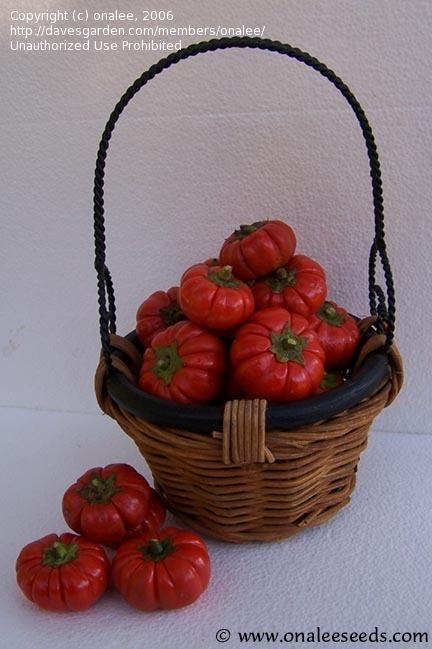





A new way to grow pumpkins? Cute little “pumpkins on a stick” may be showing up at a farm stand near you this harvest season. But what are they?
Dark orange fruits an inch or two in size hang on sticks, just right for a dried flower bouquet. You may have guessed they aren’t really pumpkins. Would you believe they are a kind of eggplant? Technically known as Solanum aethiopicum (or synonym S. integrifolium,) these novelties are a close relative of grocery store eggplants. “Pumpkin pepper” is another name used for this plant.
Buy at least one of these cuties and you’ll be set for life. Pumpkin on a stick is as easy to grow as its cousins, tomato and eggplant. All of these plants grow in warm soil and full sun. You can grow seed from the “pumpkins” that you buy for decoration, or get seed from a number of commercial suppliers. “Pumpkin pepper” is another name used for this plant. It’s not likely you will find young plants for sale next spring as you would tomato and eggplant. Plan to grow them yourself. This decorative plant would be a fun addition to a child’s garden.
Plant the seed ¼ to ½ inch deep in pots or garden. Start the seeds indoors if you would do so for tomatoes or eggplants in your area. They should emerge in a week or so, and will look like eggplant seedlings. Developing plants soon grow into a woody, three to four foot tall bush similar to an eggplant or sweet pepper plant. (Hint: If you grow many seedlings, label the pots carefully. They can look similar when small.)
If starting “pumpkin on a stick” indoors, give them fourteen hours a day of bright light for six or eight weeks. When nights are warm, start moving the plants outside. Plant into warm, average garden soil in early summer. Give them room - space plants at least 30 inches apart. Water weekly and fertilize like other vegetables. Use a tomato cage to make sure the branches don’t break in summer storms.
Pumpkin on a stick grows on a plant that looks like an eggplant. Small flowers are followed by green squatty shaped fruit. Fruits will ripen to deep reddish orange and will eventually dry right on the plant. Frost will kill the leaves on the plant; it may be perennial in zones that have only a short cold season.
Display the pumpkins right on the stick, or pick them off and fill a bowl. The fruits are naturally glossy and will keep their rich hues throughout the season. In fact, the dried fruits last for years, with their color darkening to a glowing russet-brown.
In other parts of the world, these fruits are called mock tomato, kumba, or scarlet eggplant. It is widely grown in Africa where it was developed from local wild plants. Both fruits and leaves may be eaten. Gardeners who are growing this plant for the first time, with no other knowledge of the plant, probably won’t be using this as a fun new dinner ingredient. Plants for a Future says the fruits are quite bitter. The leaves are also used as a vegetable in Africa, but they are bitter as well and may contain toxic alkaloids. African cooks know which leaves to pick and how to prepare them to avoid the alkaloids. (Don’t eat parts of this plant unless you have good advice on how to use them safely. I could not find any resources to help with that.) The plant is safe to handle and doesn’t pose any great danger to children.
Look for “pumpkin on a stick” this fall. These offbeat dried eggplants are ideal for dried flower display, and easy to grow in your garden next year.
Copyright © www.100flowers.win Botanic Garden All Rights Reserved